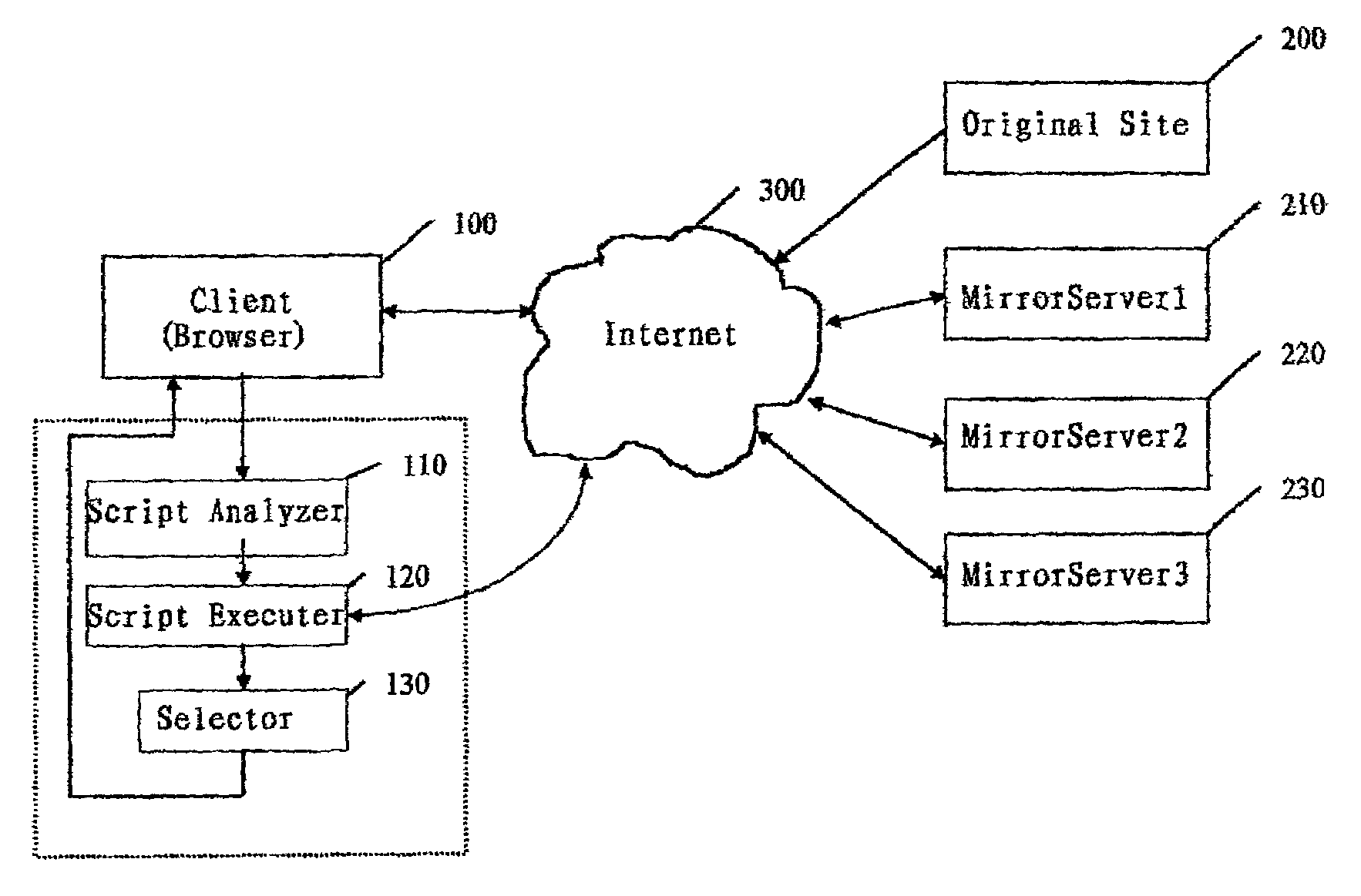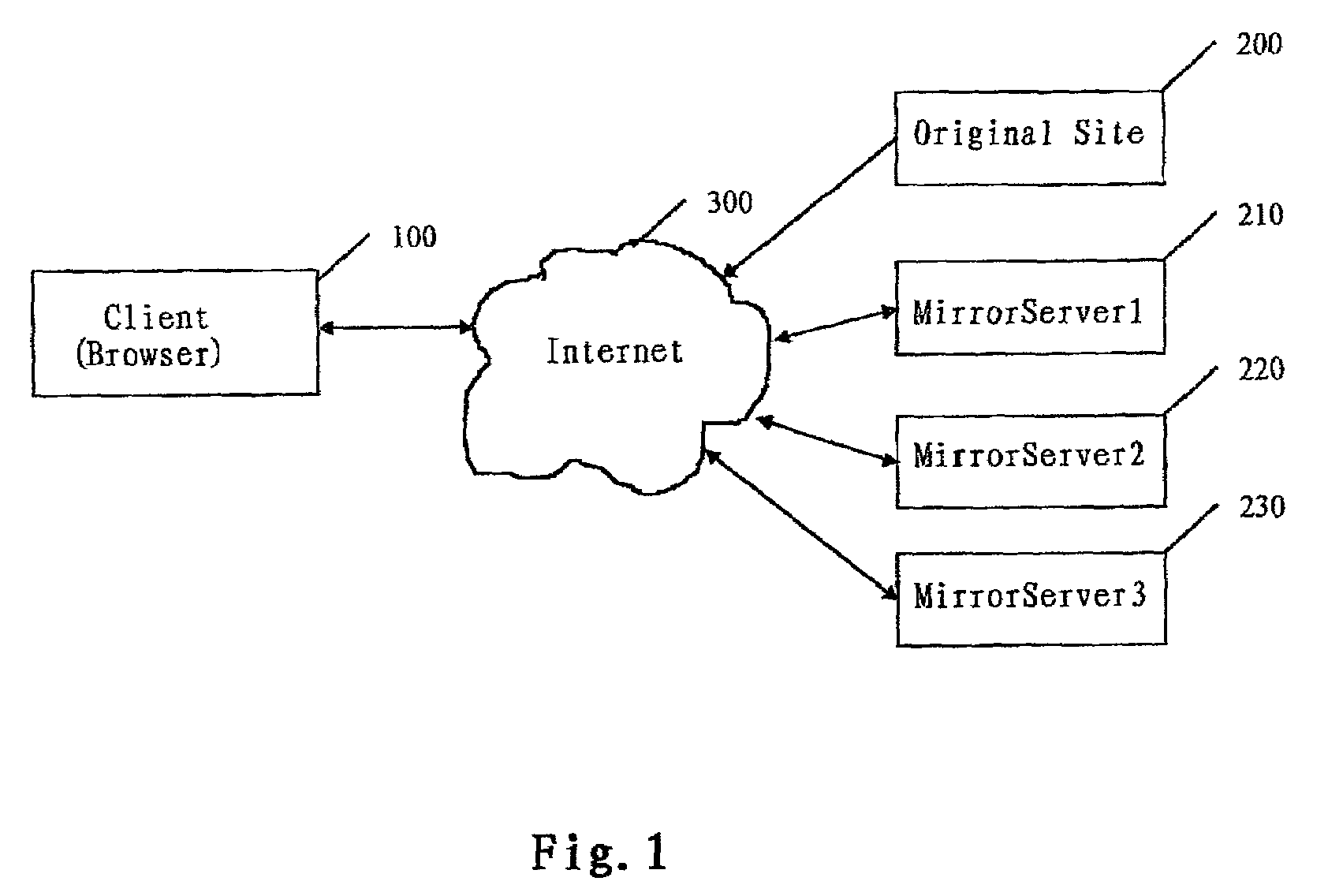Method of balancing load among mirror servers
a technology of mirror servers and load balancers, applied in the direction of program control, multi-programming arrangements, instruments, etc., can solve the problems of inability to make sure, increase the cost of overload, and the majority of users are not network specialists, so as to facilitate the request-response cycle and control mirror servers more effectively
- Summary
- Abstract
- Description
- Claims
- Application Information
AI Technical Summary
Benefits of technology
Problems solved by technology
Method used
Image
Examples
Embodiment Construction
[0029]Next, we will describe the preferred embodiment of this invention. In FIG. 1, a client 100 sets up a connection with a host server 200 through Internet 300. In this example, the client 100 might use any kind of browsers, such as Internet Explorer from Microsoft or Netscape Communicator. After the connection was set up, the Client 100 got a page and showed this page to the end-user. In this page, a lot of mirror sites' URL addresses were listed. In FIG. 1, we drew three mirror servers. They are mirror server 210, mirror server 220 and mirror server 230. The user could use some kind of pointing device, such as a mouse, to choose a site he wanted to visit. Client 100 and each server complied with the Client / Server architecture, as we all know. Numeral 300 stands for Internet.
[0030]To implement this invention into FIG. 1, we need some work on the client only. Before we implement the invention, we must build some small scripts and store them on the host 200. By doing some small tri...
PUM
 Login to View More
Login to View More Abstract
Description
Claims
Application Information
 Login to View More
Login to View More - R&D
- Intellectual Property
- Life Sciences
- Materials
- Tech Scout
- Unparalleled Data Quality
- Higher Quality Content
- 60% Fewer Hallucinations
Browse by: Latest US Patents, China's latest patents, Technical Efficacy Thesaurus, Application Domain, Technology Topic, Popular Technical Reports.
© 2025 PatSnap. All rights reserved.Legal|Privacy policy|Modern Slavery Act Transparency Statement|Sitemap|About US| Contact US: help@patsnap.com



